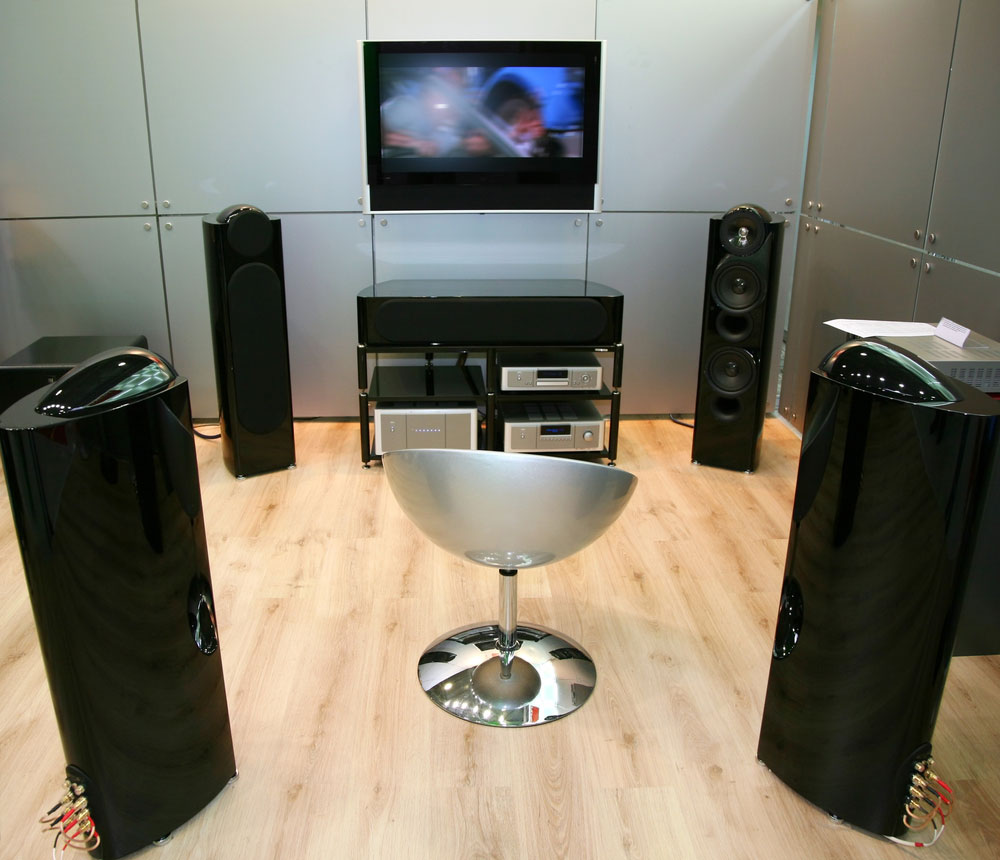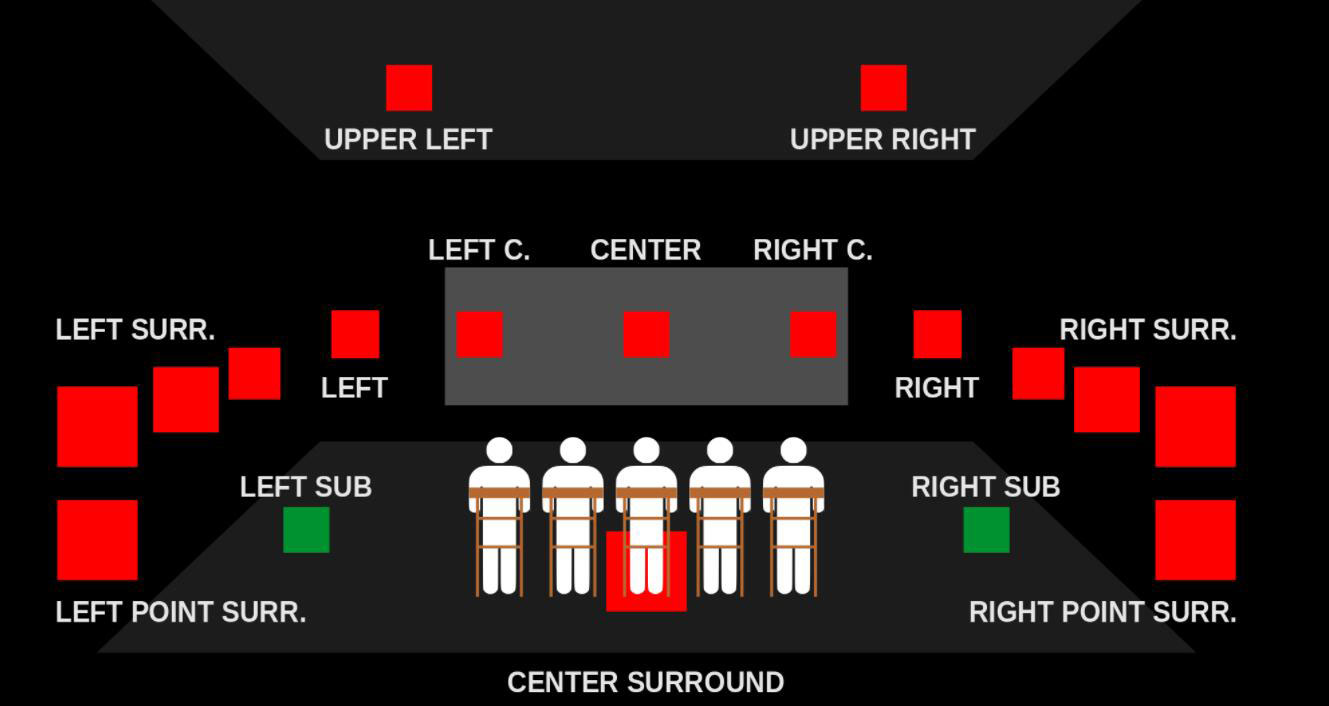The issue compounds even more, when you don’t know what the numbers in the speaker channels mean. The standard surround formats and which surround system will best suit your needs.
This article explains the various surround systems format and how to arrange or set them up. You will also learn what the numbers on different speaker channels mean.
Ready, let us begin
Contents
- 10.2 Surround Sound: What do the Numbers in the Speaker Channels Mean?
- The First Number, For instance, 10 in 10.2
- The Second Number, for instance, 2 in 10.2
- The Third Number, for instance, 2 in 7.1.2
- Multichannel Surround Sound Systems
- 5.1 Surround Systems
- system setup
- 6.1 Surround Sound Systems
- 7.1 Surround Sound Systems
- 10.2 Surround sound systems
- system setup
- Common Surround Sound Formats
- Dolby Surround
- Dolby Digital
- Dolby Digital Ex
- 10.2 Surround Sound: Dolby True HD
- 10.2 Surround Sound: DTS
- 10.2 Surround Sound: DTS- ES
- 10.2 Surround Sound: TruSurround- XT
- 10.2 Surround Sound: What is the Best Number of Home Theater Channels?
- Summary
10.2 Surround Sound: What do the Numbers in the Speaker Channels Mean?

A home theater surround system
The First Number, For instance, 10 in 10.2
The first number of a speaker system configuration specifies the number of primary speakers in the layout.
Please note that main speakers refer to the front left, center, front right, and numerous surround speakers.
Averagely current surround systems can have from 2 to 9 or more primary speakers.
Speakers
The Second Number, for instance, 2 in 10.2
The second number of a speaker system arrangement specifies the number of subwoofers in the surround system setup.
Commonly the second number will be one as most systems only have one subwoofer. However, occasionally you may come across a 2.
The reason is that some people prefer having two subwoofers to satisfy their needs for fuller bass.
The Third Number, for instance, 2 in 7.1.2
The third number of a speaker system layout specifies the height speakers, otherwise known as upward-facing speakers.
Height speakers are extra speakers usually placed on ceilings before the home theater.
These speakers introduce height to the surround system, enabling a wholesome three-dimensional sound effect.
For height speakers, the ceiling should be no higher than 14 feet.
In addition, you should place the speakers at a minimum of three feet on top of the right and left front speaker directly facing the listener.
Generally, people have two upward-facing speakers; hence, more often than not, the third number will be 2.
Surround sound channel identification diagram
Source: Wikipedia
Special Offer: Get $100 off your order!
Email [email protected] to get started!
Multichannel Surround Sound Systems
Below we define and explain the different multi-channel surround systems.
5.1 Surround Systems
It is one of the favorite home theater surround systems in the market.
Here are some of the reasons making the 5.1 Surround systems popular.
- Simple to setup
- Immersive audio- the system offers more captivating audio than the standard two and three-channel stereos.
- Space utilization- A 5.1 system works well in small or tight spaces.
- Connectivity- the system allows for various linking options. Some can even link to mobile phones.
system setup
- The 5.1 surround system has a relatively simple setup. It constitutes six channels, a subwoofer, and five primary channels.
Where:
- Main Speakers- the 5.1 surround system generally has three speakers directly in front of the viewer—one on the left of the TV, another on the right, and one in the middle.
- Subwoofer- you can place it in the middle of the room or at the corners.

A subwoofer
- Surround sound speakers- Also known as satellite speakers. You can place satellite speakers behind the room( right and left sides)
Please note that satellite speakers are in no way similar to bookshelf speakers.
The diagram below depicts a typical 5.1surround system layout.

Source: Wikimedia Commons.
As earlier stated, the 5.1 surround system is highly versatile. Therefore, you can use the above setup or configure one that will meet your home theatre room’s specific needs.
In case you have adequate space in your home theater room, the ideal 5.1 setups would be:
Front/Primary speakers- Place the main speakers (front right and front left) at 23 to 30-degree angles away from the middle speaker.
Satellite speakers- mount these speakers at 90 to 110-degree angles away from the middle speaker or the television.
Subwoofer-you can put the subwoofer at the center of the room, in one corner, or even behind the couch to achieve a vibration effect.
Nevertheless, experts advise moving the bass around until you realize the desired bass performance.
The 5.1 surround system is compatible with numerous devices such as intelligent and digital TVs, movie theaters, and regular DVDs.
6.1 Surround Sound Systems
The 6.1 multichannel sound technologies are simply an improved version of the 5.1 surround sound system.
6.1 technology employs a similar setup to that of the 5.1 surround sound, the only difference being it has an additional speaker. The added speaker facilitates an enhanced 3D sound experience.
6.1 Technology setup
- All speakers are configured similarly to the 5.1 surround sound system.
- The added speaker occupies the rear center position.
The 6.1 surround sound system provides an extra sound dimension to your room, as shown in the diagram below.
A 6.1 Surround system layout
Source: Wikimedia Commons.
7.1 Surround Sound Systems
The 7.1 Surround system is simply an enhancement of the 6.1 speaker system.
Therefore, the system shares all the 5.1 speaker system configurations with two rear speakers.
These added speakers provide an even deeper, well-rounded sound experience with an almost cinematic effect.
7.1 system setup
As stated earlier, the 7.1 surround system has a similar configuration to the 5.1 system except for the two rear speakers.
7.1 Surround system layout
Source: Wikimedia Commons.
Ideally, you should place the added rear speakers between 135 to 150-degree angles to the center speaker or the TV.
Doing so increases the chances of you realizing excellent surround sound gotten by amplified background sounds.
Please note that another name for the rear speakers is Satellite speakers.
10.2 Surround sound systems
The 10.2 surround system is two times the 5.1 configuration, offering twice the sound clarity.
The system entails 14 channels and is used by top professionals; hence it isn’t commonly found.
THX Corporation developed the 10.2 surround system for high-fidelity audio and visuals for movie theaters.
The configuration entails seven front channels:
- Wide speakers left and right
- Height speakers left and right
- Front speakers, left and right
- Center front speaker
- Two subwoofers
- Three surround speakers, right, left, and back.
system setup
10.2 Surround sound system layout
Source: Wikimedia Commons.
Other multichannel surround systems include:
- 2.0
- 2.1
- 3.1
- 4.1
- 7.1.2
- 9.1
9.1 channels surround sound
Source: Wikimedia Commons.
- 9.1.2
Common Surround Sound Formats
Dolby Surround
You can find the Dolby Surround in Hifi and VHS stereo systems.
This audio format works by multiplexing the multi-channeled audio into right and left channels, and consequently, the Dolby Pro Logic decoder decodes these channels.
Finally, the Prologic decoder reproduces a Dolby four-channel surround sound experience.
Dolby Digital
Also called the Audio Codec -3(AC3), this audio format facilitates an enhanced 5.1 surround sound experience.
You can find the format in DVD, blue ray movies, play stations, and video games.
Dolby Digital Ex
Dolby digital ex is a redesigned model of the Dolby Digital Audio.
The format constitutes an extra surround unit named the center-surround channel for an improved, wholesome and realistic experience.
10.2 Surround Sound: Dolby True HD
Also known as the next-generation surround sound format, the Dolby True HD format only works with high-definition media.
It features an 18mbps bit rate and 100% lossless audio encoding.
The format can also support HDMI; hence, manufacturers apply it in HVD and BRD encoding.

Home theater
10.2 Surround Sound: DTS
DTS is a multichannel surround sound format primarily used in commercial and consumer applications.
To work the format requires an optical and a DTS decoder, and you can find it on BRDs and HVDs.
10.2 Surround Sound: DTS- ES
Full name Digital theater sound – Extended Surround Sound in an improved design of the regular DTS.
The format is present in 6.1 or larger configurations, and it provides a rather satisfying digital experience.
10.2 Surround Sound: TruSurround- XT
The TruSurround –XT can effectively handle 2.1 to 10.2 channel surround plus headphone media.
This format encodes the audio using the multiplexed system and is found in BRDs.
10.2 Surround Sound: What is the Best Number of Home Theater Channels?

16.2 channel surround sound
Source: Wikipedia.
There is no specific number of home theater channels you can or should use.
However, some factors may help guide you on the most effective option to employ. They include;
- Size and shape of the room. For instance, a larger room will require more speaker channels compared to a small space.
- Type of furniture
- Type of system (Is it soundproof.)
Summary
Surround systems may be somewhat confusing with the many numbers and weird terminology.
Nevertheless, we sincerely hope you understand what the different numbers mean and the typical surround sound formats after reading this article.
Special Offer: Get $100 off your order!
Email [email protected] to get started!










